Homemade Dried Pasta
There are few things that can distract a pasta lover while making homemade pasta. I was so intent on working on these lovely little noodles that Brad cooked our entire dinner, which is both lovely and rare (it was uh-mazing, by the way).
However, one thing that did manage to pull me away from a mound of fresh pasta dough was Sierra calling to inform me that she had come across a post from my little food blog (shared by Paul at Dudecraft) on a fairly major craft blog, which then led to pick ups by several other sites, and it turned out that my site was crashing from so many people trying to visit. Holy crapoly. A tiny viral internet moment!
I’ve been overwhelmed and flattered by the feedback as thousands of new readers have taken a look at 30 Pounds land. The spike will level out, I’m sure, but still! I write this blog because I enjoy it, for sure, but if I wasn’t interested in sharing with you my successes, failures, moments of confidence, and snippets of frustration, and hearing about yours in return, this site would not exist. So thanks to all of you for reading. I’m really, really happy you’re here.
Okay, sappy reflective moment over. Let’s make some dang pasta!
We’ve discussed my pasta obsession. I love it. I cook it a lot. The major part of an entire shelf in our pantry is dedicated to pasta and its friends.
(I love you pasta.)
So as someone who strives to make things from scratch, it was only a matter of time before I’d look at the stacks of Barilla in the pantry and wonder if I could replace them with something homemade.
Turns out, the answer might be yes! I found a recipe a couple of years ago for eggless pasta, made with semolina flour, that dries quickly and stores well. And what luck! I had an Amazon gift card at the time, so I marched into the internet mines in search of pasta-making equipment.
Let me be clear: this is NOT an expensive pasta machine. I think it’s the cheapest one in existence. Like for real. In hindsight, I probably should have purchased one that, well, works better? But this has been enough to get me started, so it holds a special place in my heart (and my cupboard). Do you have to have a pasta roller to make pasta? Technically, no. But it’s much easier to achieve thin, delicate little noodles when you have something more than your brute strength, a rolling pin, and a pizza cutter to help you out.
This is also really cheap, but I can’t imagine paying more for one. It’s a stick on a block full of sticks. I wish I had fifty. Do you need this? Again, not necessarily, a bunch of clothes hangers on the edge of your counter will work as well. But I like the tree. It looks like a weeping willow of awesome when it’s covered with pasta. You’ll see.
You start with semolina flour, sea salt, some water, and some olive oil and… that’s it. Cool, huh? It all gets mixed together to form a big wad of dough.
See how the dough still looks kinda gritty and lumpy? Semolina, when dry, actually had a texture similar to that of a finely ground corn meal, and I was honestly skeptical the first time I tried it for pasta. But knead on, friends, a smooth ball of puddy-like dough is just a few minutes away.
The dough, when it is ready, will be smooth, firm, pliable, and not at all sticky. Sticky pasta dough pushed through a metal roller and pasta cutter is BAD. Trust me. My first attempt two years ago was… horrible. The cleaning of the pasta machine was a total nightmare.
Anyway.
After the dough is kneaded, it’s important to let it rest. Gluten gets really frazzled when you work it too hard, it needs a siesta just like everyone else. Cover the dough with an ever-so-slightly damp cloth (too damp and the dough will get sticky… see paragraph above), and a dry cloth will pull moisture out of the dough and make it dry out a bit too fast.
Once your gluten has chilled out for 20 or 30 minutes, it’s time for the fun!
Even my cheap cheap pasta crank offers seven settings of thickness. You don’t want to start at the setting you think you need, as running the dough through the machine several times is an important part of the kneading process and also stretches the dough out so you have nice long noodles instead of little stubs.
I took mine down to thickness #3 before switching over to the spaghetti cutter on the other side of the machine. Here’s where a better machine might serve me well: the cutter doesn’t really separate the noodles all that well, so that lovely duty was left to me. Oh well. There are worse things. I also made some wider cut noodles (about the width of fettuccine) which separates a bit easier.
Before you know it, the tree is full! I also had to resort to clothes hangers for overflow. No shame in that.
After drying for about 24 hours (though they would have been ready earlier), the noodles were ready to be packed up for storage.
Et voila! Homemade pasta, to be enjoyed another day!
Well, most of it. I simply couldn’t resist making some of the noodles. For posterity. And my belly.
Homemade Dried Pasta
Adapted from All Recipes
2 c semolina flour
1/2 tsp sea salt
1/2 c + 2 T warm water
1/2 T olive oil
In a large bowl, combine flour and salt with a fork. Add water, starting with 1/2 cup. Begin stirring with a fork, but change to using your hands when the dough begins to form. Dough will be very tough; add additional water as needed. Add olive oil and continue to combine with hands.
Once dough forms a complete ball, transfer to a lightly floured surface and knead for 10-15 minutes until dough is firm, smooth, and pliant. Cover with a slightly damp towel and let dough rest for 20-30 minutes (the longer it rests, the more the gluten will relax, making pasta formation easier).
If using a pasta roller, roll pasta through flattening half of roller in small handfuls, starting at the widest setting and re-rolling the pasta through the machine several times, reducing the width each time to desired thickness. If rolling by hand, divide dough into 5-6 pieces and roll as thin as possible (about 1/16″ thick) on a lightly floured surface. Following either rolling technique, cut pasta to desired shape.
Pasta can be cooked fresh for 2-3 minutes in boiling water or can be dried for storage. To dry, hang on a pasta tree or clean wire hanger and let dry overnight. Store in an airtight container in a cool, dry place.
To cook dried pasta, add to boiling water and cook for 4-6 minutes, or just until pasta is cooked through. Do not overcook or pasta will be mushy.

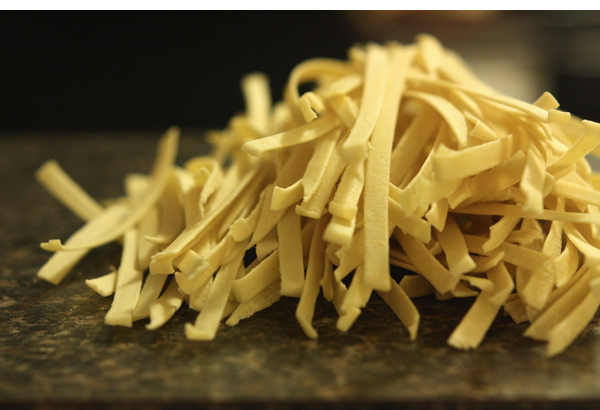
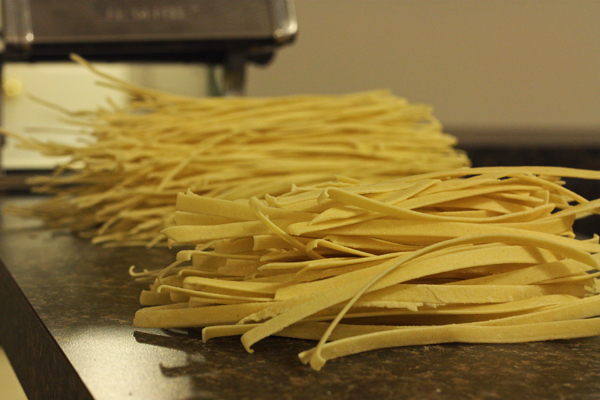
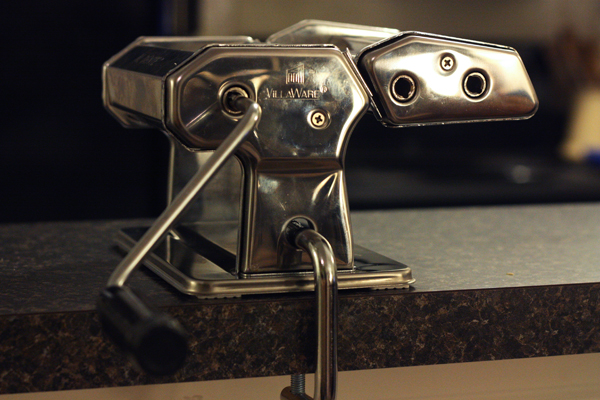
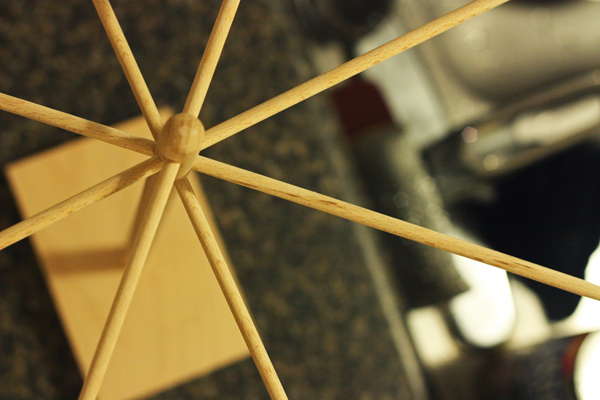
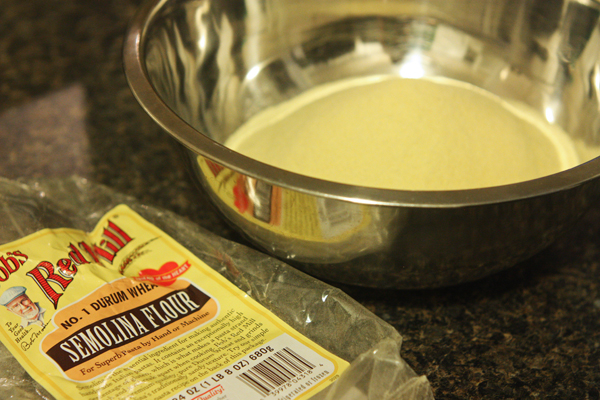
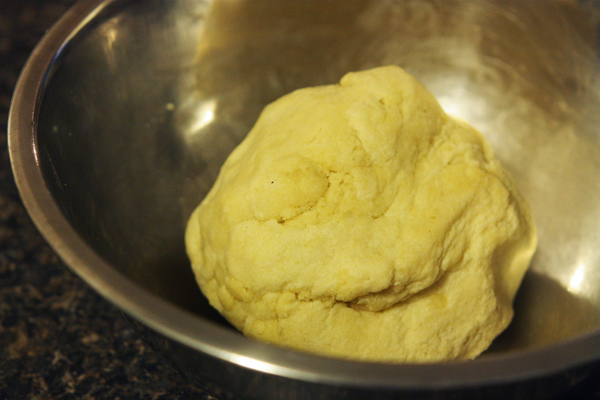
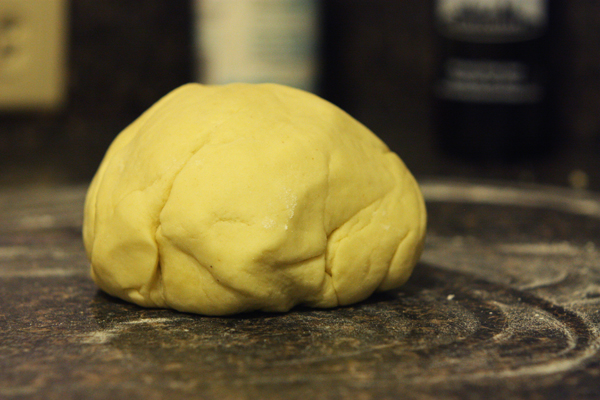
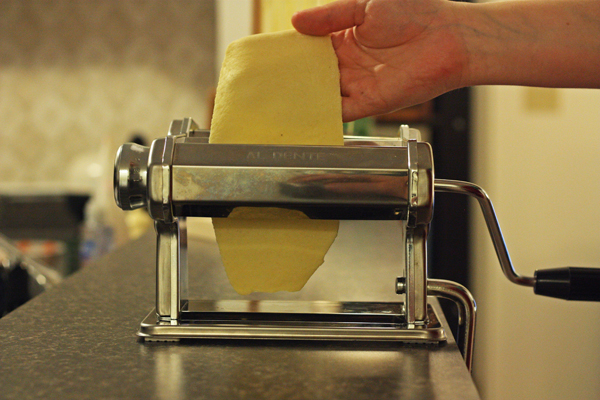
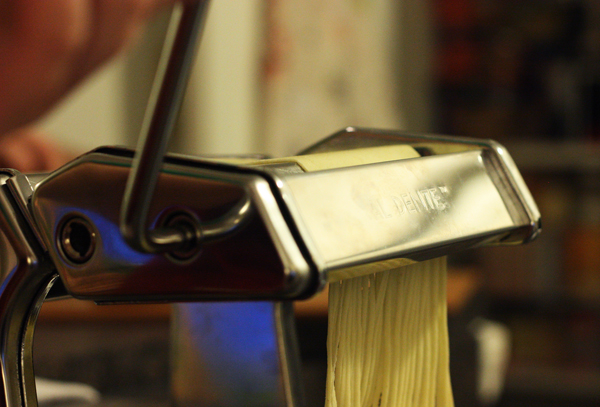
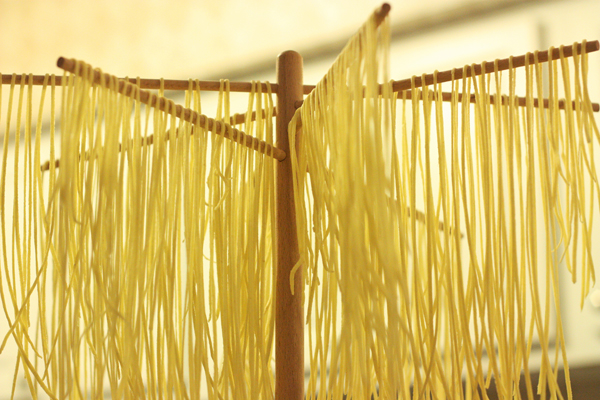
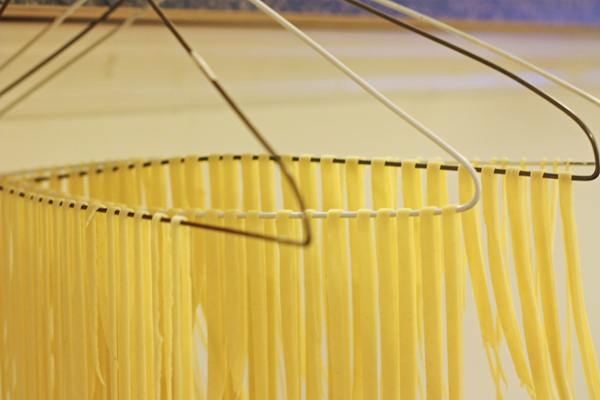
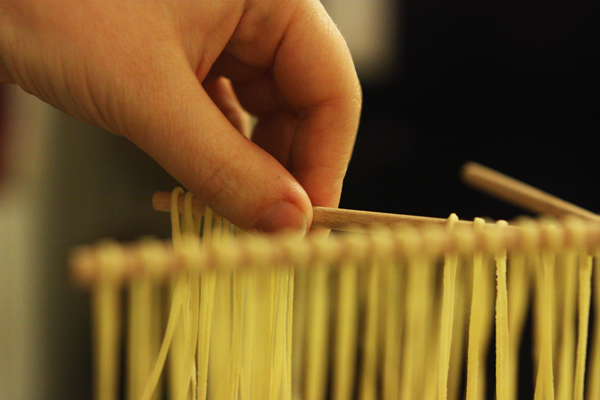
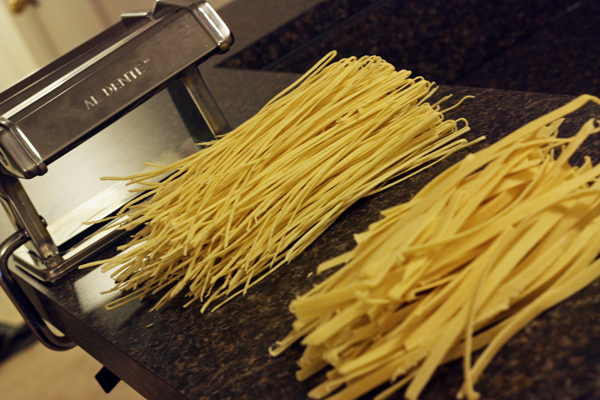
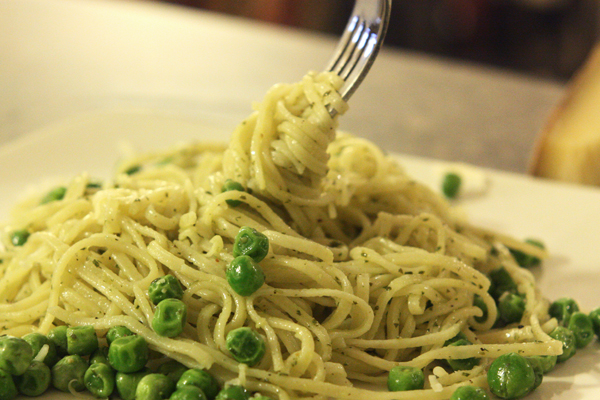
kelly@pastaroller
March 4, 2012 @ 9:43 pm
Love that you can still get that thickness with the pasta crank. And important not about putting it through more than once to get that desired result, made that mistake before.
Melissa
August 13, 2015 @ 3:02 pm
Hi,
I plan to make dried pasta for Christmas gifts this year – how long does the dried past last for? Thanks for your help :)
Betty Crockett
October 28, 2016 @ 8:54 pm
This may be a silly question, but is it necessary to have an eggless recipe if I plan to dry and store my noodles? I have an egg noodle recipe I love and want to make ahead, that’s the only reason I ask. Thanks!
Emand
November 11, 2016 @ 2:46 am
Hiw long do they keep?
Nicole Alessi
November 25, 2017 @ 12:13 pm
How long does the dried and stored pasta last?
Laura gill
February 8, 2018 @ 1:53 pm
Can you use this recipe with an electric pasta maker?
George
July 5, 2018 @ 6:25 pm
It depends on what type of electric pasta maker you have. If it’s one that extrudes the pasta, then you may need a little bit softer dough (with more water). It has worked fine in my Kitchenaid pasta roller attachment.